Union Steam ship Co SS Moeraki & SS Manuka 1902 & 1903
Please Note: Firefox, iPhones, iPads & some other Search Engines may not be suitable
Use Internet Explorer & Google for this Web Page to load perfectly!
Click the logo above to reach the ssMaritime FrontPage for Ships of the Month & News Updates
With
Maritime Historian, Cruise‘n’Ship Reviewer, Author & Lecturer
Please
Note: All ssmaritime as well
as my other related maritime & cruise sites are 100% non-commercial and
privately owned sites. Be assured that I am NOT associated with any shipping or
cruise companies or agencies or any other organisations! The author has been in
the passenger shipping industry since May 1960, but although retired and
unwell, I occasionally attempt to write an article now and then, in order to
bring enjoyment and pleasure to ship enthusiasts past passengers and crew.
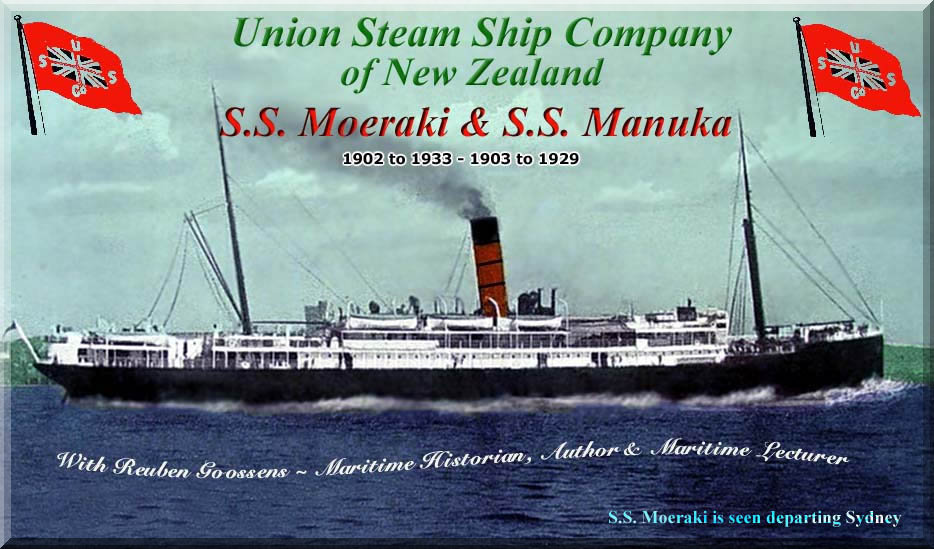
The photographic logo above & all images marked with an *
were colourised by the author.
Introduction
The Union Steam Ship Company of New Zealand (USSCo) had been operating since the 1860s and their first
passenger ships/liners were five small ships, the 174-ton SS Maori, 177-ton
Beautiful Star, 355-ton SS Bruce and the somewhat larger 721-ton SS Hawea and her 723-ton sister SS Taupo.
Thereafter other new ships between 1,000 to 2,000-tons came into service,
operating on
Then between 1898 and 1911 USSCo
decided it was time to replace their earlier Trans-Tasman liners and with a new
design the placed an order with
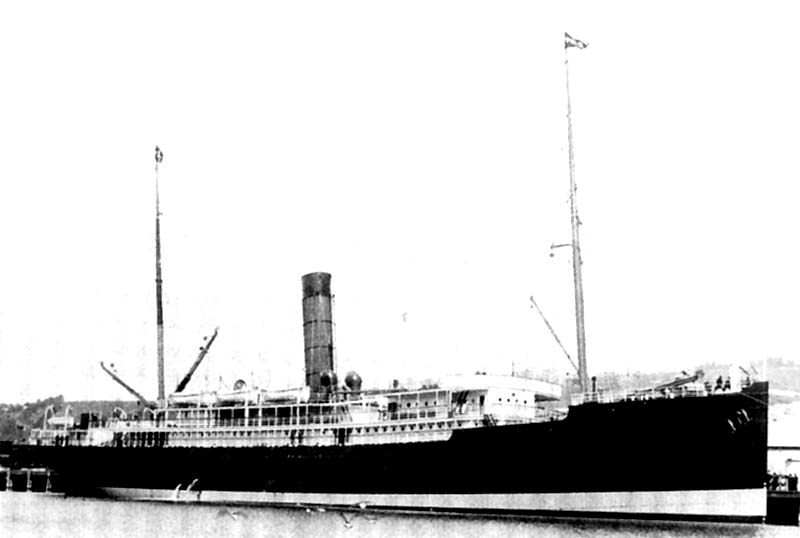
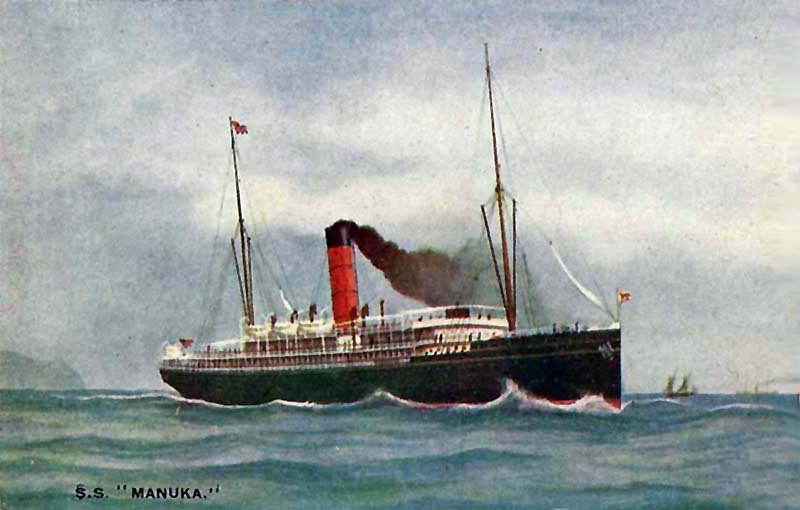
A very early postcard of the
SS Moeraki
What was amazing, by the end of 1899 USSCo with their fleet of small ships had already transported a remarkable 212,500 passengers as well having carried a good 1,389,917 tons of cargo and covered an amazing 2,124,704 miles or 3,419,379.6 km.
On Wednesday July 9, 1902 the future of the
Union Steam Ship Company began a brand new era of a bright innovative time of
shipping for New Zealand, as this the first of two identical liners that
featured, two x 3 cylinder triple expansion
steam engines, with dual shafts and two screws that whilst in her sea tails
could manage a remarkable 15+ knots, which was excellent for the times! The
Moeraki was launched on this day (September 9) by
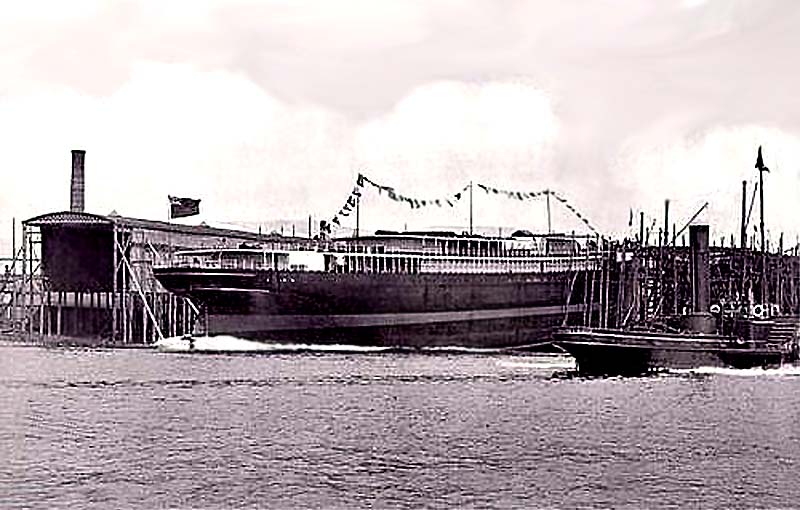
The Moeraki was launched on Wednesday July 9, 1902
SS Manuka
The Manuka was launched on September 8, 1903
and she ran her trails on November 14, and was delivered ten days later on
November 24. She arrived in
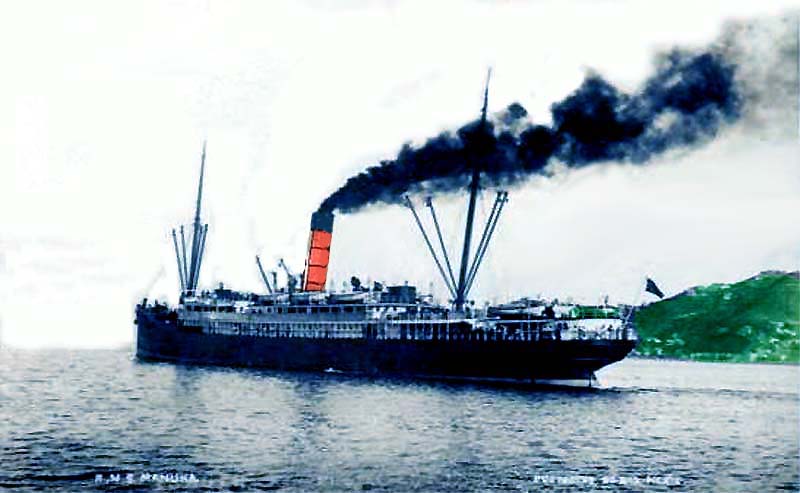
* The delightful
departing
The Ships Interiors:
Please note: There are slight differences between the two ships and this will be seen as follows such as the dinning room seats on the SS Moeraki 112/104 = on the SS Manuka The same will apply each time the forward / slash is used in the main copy, whilst in the specification section it will be ship 1. or 2.
Sadly I do NOT have any interior photographs of these wonderful ships
Should anyone have any suitable photographs I would greatly appreciate them!
Email me at – rg@ssmaritime.com
1. First Class:
Both ships provided accommodations for 187-193 First Class passengers as well as 124-135 in Second Class. First Class staterooms were all beautifully fitted out and they were the most modern and up to date accommodations to be found on any ship of the time. Each room had two lower beds having the finest inner spring mattresses and each bed could be folded away during the day to make the room into a lounge, thus increasing the floor space of the room. In addition there was also ample storage with drawers and wardrobes, and yes even a secret, well hidden fold away toilet with a privacy screen, which was unheard of in those days, but certainly appreciated. Each room had flowing water and a hand basin, thus these ships were considered as the most up to date liners of their day! However bathrooms were located down the hall and these were very complete as each had a shower with a fold down seat, a full size bath with a hand held shower, toilet and a bidet and every other possible need required! All First Class staterooms were located amidships of the vessel where both motion and vibration would be at a minimum! All staterooms were well ventilated, especially whilst these ships were sailing on the Trans-Pacific service. Ventilation was both from a natural source, such as the windows, or by the means by the electric fans installed that would be very useful to keep the room a littler cooler whilst in the topics.
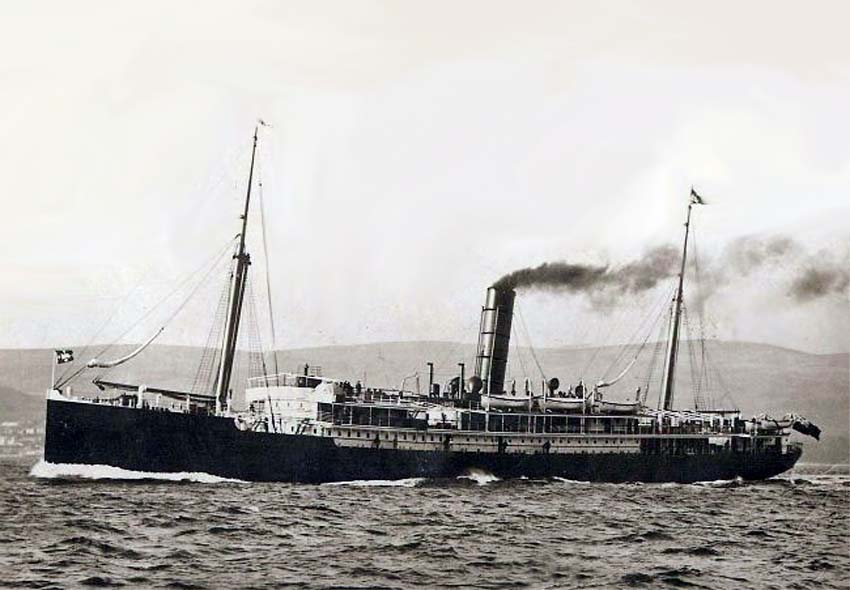
The Dinning Room was located forward on what would be called later, in the 1950s “Shelter Deck”, being the deck just above the hull, and it was able to seat 112/104 dinners at a time. To enter the venue you had to go though large swinging doors that were filled with leaded glass, The venue was clad in waxed oak that was richly carved, decorations in ivory and gold, whilst there was a wall covered with an new feature first created in 1877 Anaglyptic wallpaper. The ceiling was beautifully panelled to match! The upholstery was in a rich sylvan relief velvet., whilst the window boxing tops were of a “wheel” design, which was most unusual on board a ship, and strangely enough that feature was found throughout the ship, such as her decorative mirrors, etc., which were all circular.
Tone deck up was the Smoking Room being the traditional venue and it was fitted out in a true classic style, being fully panelled in a polished mahogany, with additional smaller panels of embossed green Buffalo leather and the upholstery was of course in the same luxurious green buffalo hide! This venue was located just aft of the Music Room with only swinging doors separating the two rooms.
The Music Room was a grand venue indeed and
beautifully finished in mahogany and finished with Ivory enamel’s. This
venue had an especially high ceiling, as well it having a magnificent Dome
Skylight made of steel and stained glass, whilst the outer exterior casing
being made of teak and plate glass that reached out onto the top deck. In
between the two layers of the dome electric lights were fitted in order that
the rich and beautiful effects of the colours that could be enjoyed in the
evenings! Along the timber walls of the Music Room were images of various
popular destinations around
There was no doubt about it, but these sister ships were indeed the glamour liners of the Union Steam Ship Company in 1903!
2. Second Class:
This class is located in the after part of the ship and it featured a most pleasant Main Lounge that seated around 84 people. This room had its walls beautifully enamelled in French grey, picked out with a light of green and the room was beautifully furnished giving it a good of style, rather than the simple venues found on other ships!
The Dinning Room covered the full width of the ship and although it was relatively plain, painted in cream, but with the tables set it was pleasant. It seated 82 passengers. The accommodations offered were reasonably roomy and comfortable and there was excellent bedding. There was certainly no lack of facilities and bathrooms all being close to all cabins, etc, as they were all nearby!
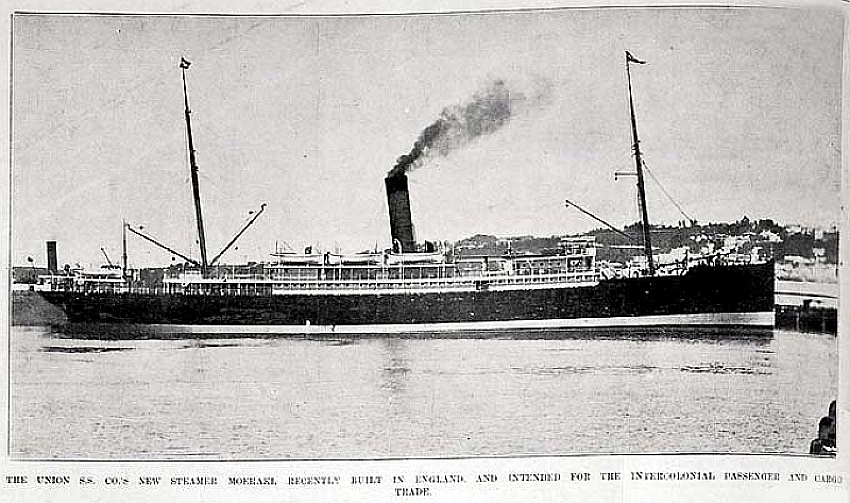
*
Service Records:
SS Moeraki
She was handed over to the company on
September 30, 1902 and was placed on the Trans-Tasman service. From 1914 to
1918 she was used as a troop ship and survived WWI and upon completion was
refitted and resumed pre-war services. Then from 1928 she worked with the
Australasian United Steam Ship Company on their
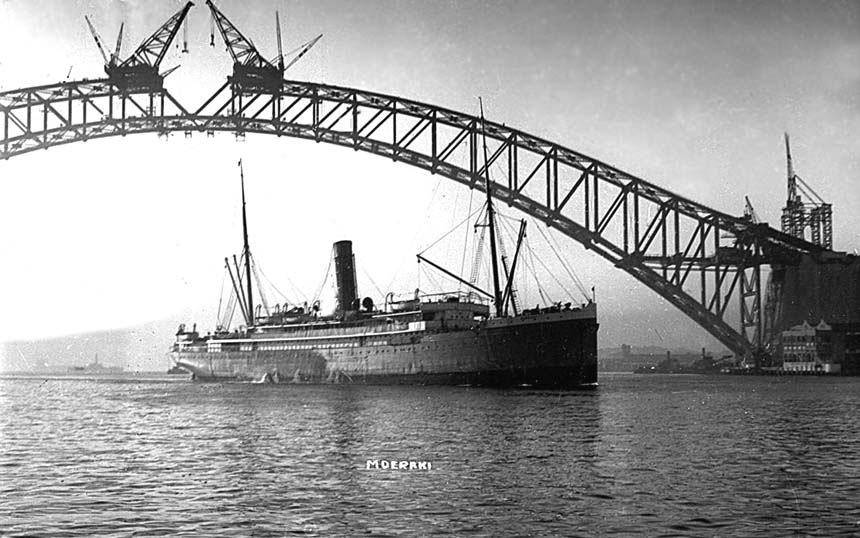
A wonderful photograph of the
complete in 1929. The great Bridge was just beginning, but sadly, the Moeraki was nearing her end!
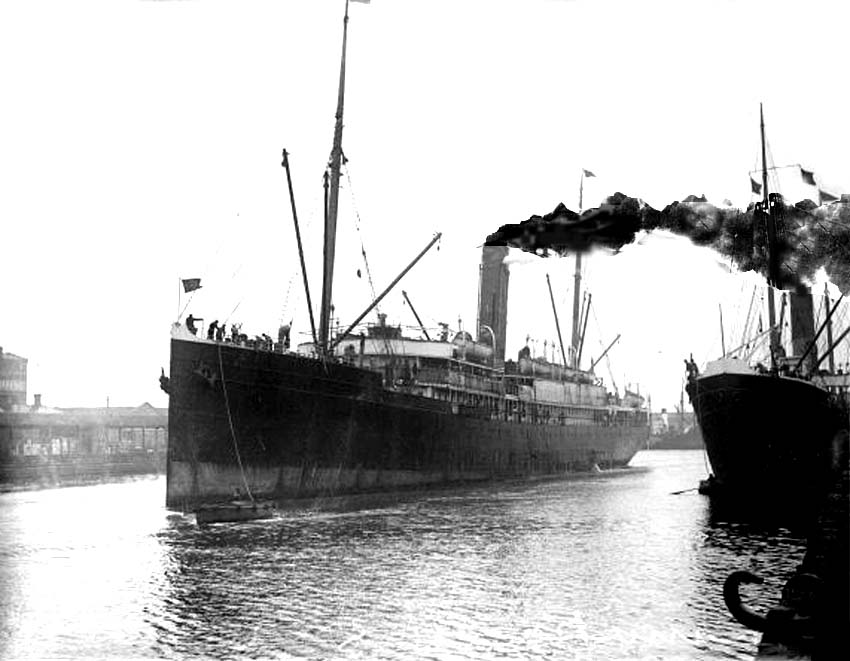
The Moeraki is heading for her berth in
In September 1930, this fine ship was laid up
in 1930 at
SS Manuka
Built for the Trans-Tasman 'horse-shoe'
service from
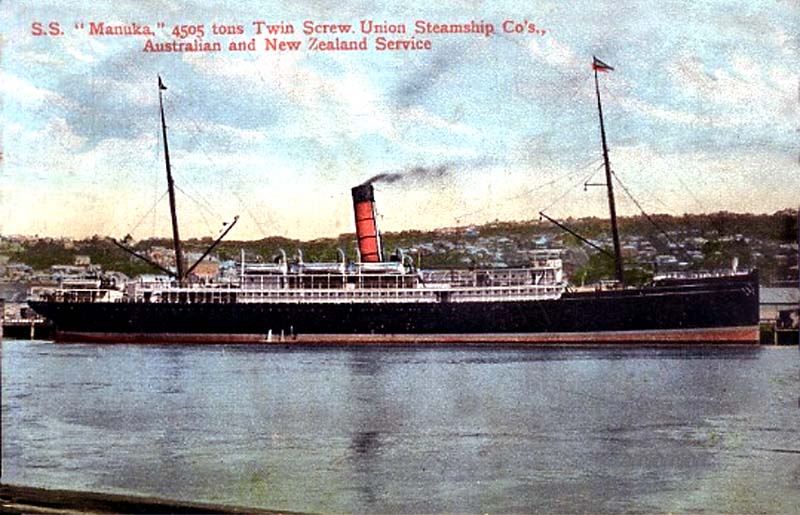
A delightful postcard of the
However, she was replaced by newer turbine
steamer
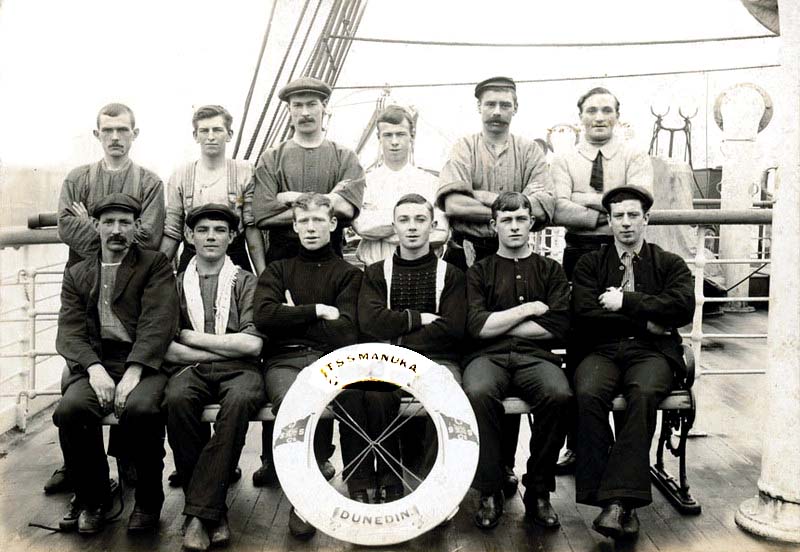
Here we see some of the Manuka’s crewmembers
Then in 1927 due to economic circumstances of
the times, the Manuka was laid up in
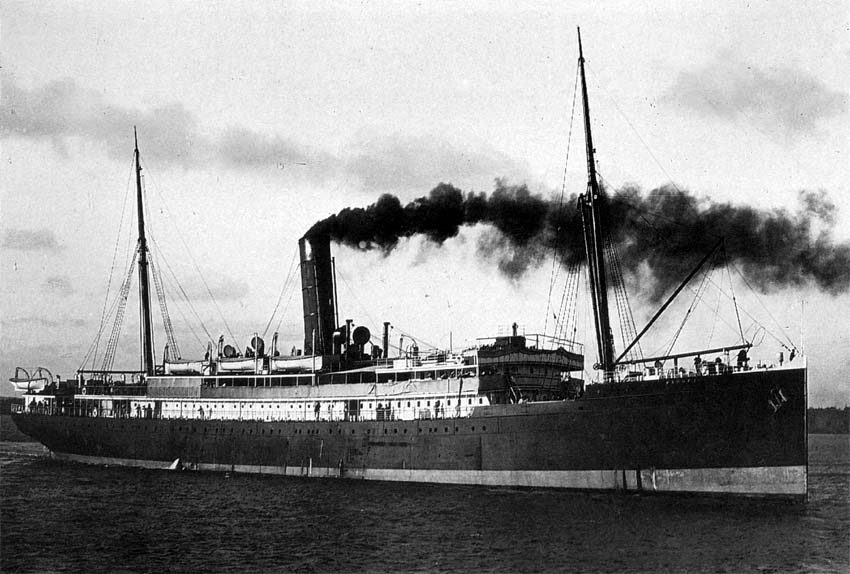
Then late in 1928, whilst on a voyage between
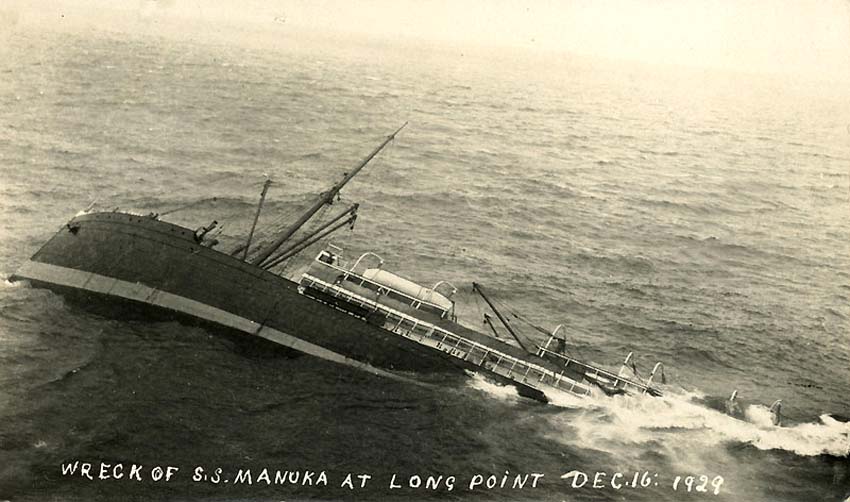
A tragic photo of the Manuka’s tragic end!
Thankfully all of her 203 passengers and crew that were on board took to the lifeboats and had an uncomfortable long night in them, but they all landed safely on the beach nearby. However, as there was no one living nearby, they had to walk across paddocks until they finally reached a road from where they found and were transported to a place named Owaka.
Later when a maritime inquiry was held, the inquiry found that the Manuka was located south of the position where she was supposed to be, and that her being wrecked was “due to an abnormal westerly set.” In addition, “the ships captain, officers and her crew were praised for their actions after the accident.”
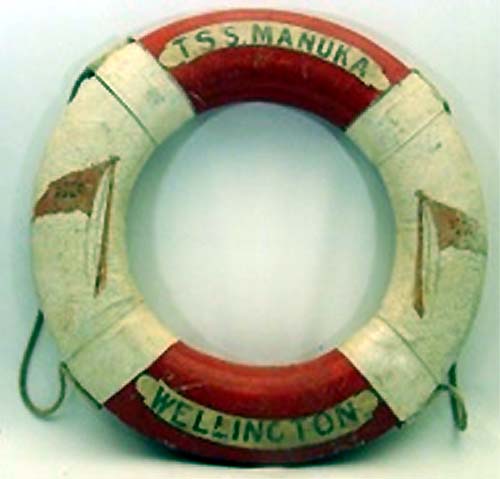
Above & below: A lifebuoy and a pennant that was located after the disaster and is now part of the memorabilia selection
Pennant image sent in by a supporter –
Please see photo notes at bottom of page

Builder: by
Yard: 1. 664 – 2. 689.
Launched: 1. July 9, 1902.
. 2. September 8, 1903.
Cost: 1. £113,499 – 2. £114,855 delivered.
Tonnage: 1. 4,392 GRT (Gross Registered Tons). 2,715 Net Tons.
. 2. 4,505 GRT. 2,812 Net Tons.
Length:……………………..112.41m - 368.8ft.
Breadth:…………………….14.39m - 47.2ft.
Draught:…………………….9.51m - 31.2ft.
Propulsion: 2 triple-expansion steam engines, 4 cranks on the Otto-Schlick balanced system.
Screws: Two.
Speed: 14 knots service speed, maximum 15 knots during trails.
Passengers: 1. 187 First Class, 124 Second Class.
. 2. 193 First Class, 135 Second Class.
Crew: 99.
Cargo capacity: 3,928 cubic metres - 138,740 cubic feet.
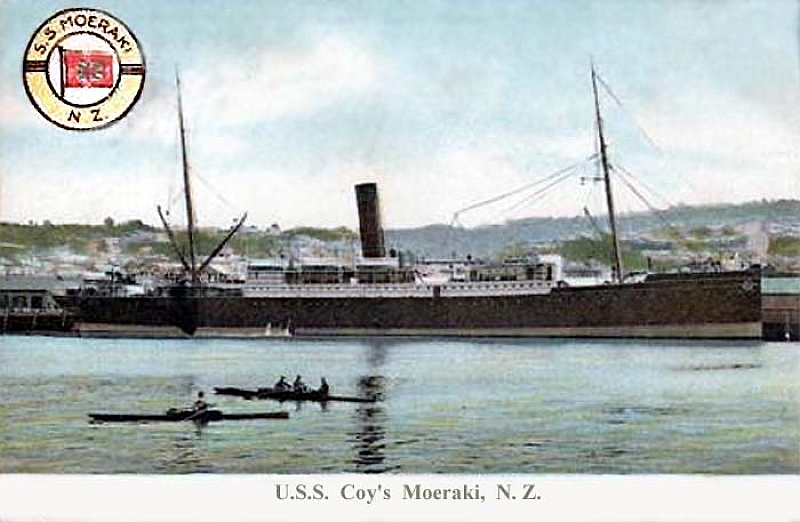
The
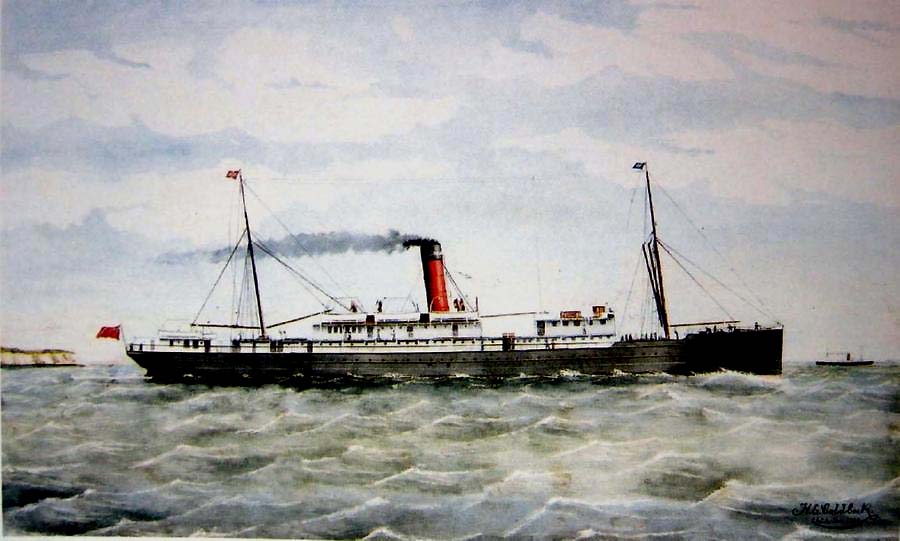
To complete this feature, I will conclude with this superb painting
of the
***********************************
“Blue Water Liners
sailing to the distant shores.
I watched them come, I watched them go and I watched them die.”
Return to the ssMaritime
MAIN INDEX
For over 1,250 Classic Passenger Liners, Migrant
Ships & Passenger-Cargo Liners from all over the world!
ssMaritime.com & ssMaritime.net
Where the ships of the past make history & the 1914 built MV Doulos Story
Also visit the …
“Save The Classic Liners Campaign”
Please
Note:
ssmaritime and associated sites are 100% non-commercial and the author seeks no
funding or favours of any shape or form, never have and never will!.
Photographs on ssmaritime and
associate pages are by the author or from the author’s private
collection. In addition there are some images that have been provided by
Shipping Companies and private photographers or collectors. Credit is given to
all contributors. However, there are some photographs provided to me without
details regarding the photographer/owner concerned. I hereby invite if owners
of these images would be so kind to make them-selves known to me (my email
address may be found on www.ssmaritime.com only), in order that due credit may be
given.
This notice covers all pages, although,
and I have done my best to ensure that all photographs are duly credited and
that this notice is displaced on each page, that is, when a page is updated!
ssMaritime is owned & © Copyright
by
